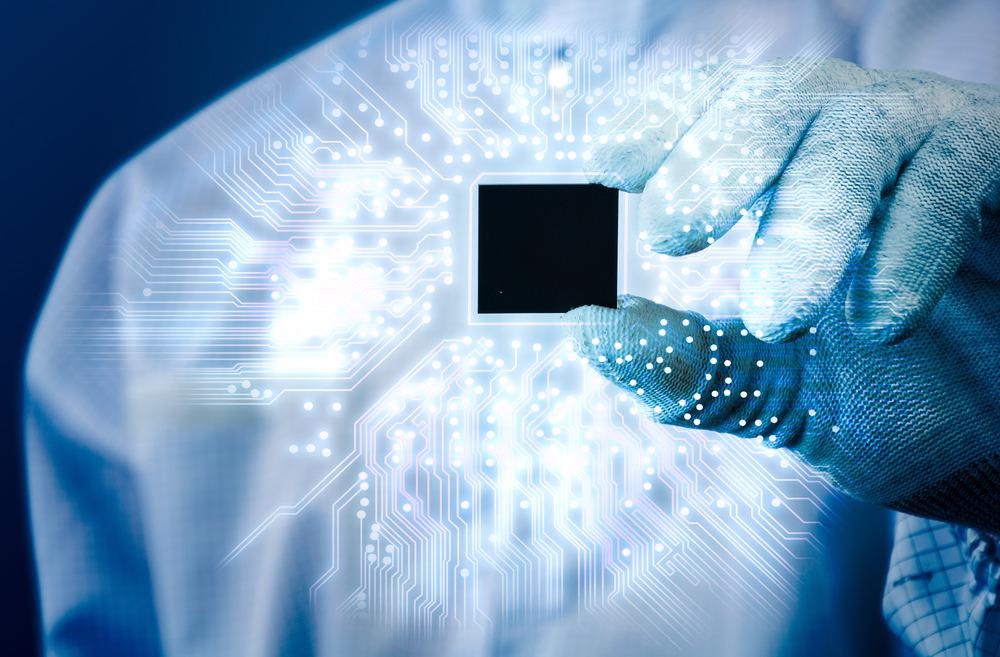No products in the cart.

Both the robotics and semiconductor manufacturing fields are rapidly evolving simultaneously. In this article, the benefits of using robots in the semiconductor manufacturing sector, as well as the advantages and challenges associated with their use, are discussed.

Image Credit: Wichy/Shutterstock.com
As robots become more commonplace in industrial automation and manufacturing, their potential application in the global semiconductor industry has received much interest.
Semiconductor manufacturing is a complicated process. Robot systems, among other technologies, are crucial in automated semiconductor production. Due to complex assemblies and small parts such as wafers and chips, manufacturers are designing flexible robots that can meet delicate semiconductor fabrication processes.
Using robots to handle microscopic parts has become essential in introducing micro and nanotechnology for semiconductor manufacturers. Similarly, moving silicon wafers at fast rates without causing damage is a critical problem for these machines in semiconductor fabrication.
These tasks become more complex with variable wafer sizes. To avoid causing any damage to these delicate components, advanced clean robots are used in handling motions
Why Are Robots Used in the Semiconductor Industry?
Semiconductor fabrication requires a high level of purity and cleanliness within the manufacturing environment. Robot manufacturers play a crucial role in meeting these needs, helping to ensure a safe, impurity-free workflow.
For highly sensitive applications, these systems can offer an ultra-high performance line of cleanroom robot arms. Such installations can manipulate cassettes, silicon wafers, photomasks and panels in all semiconductor value chains with smooth trajectories, high speed, and exceptional accuracy.
Robotics & Automation eBook

Compilation of the top interviews, articles, and news in the last year.
The design of these robots depends upon the task they are required to perform. Since the handling of semiconductors is a very delicate process, each system component directly involved in handling these semiconductors must be critically assessed to ensure precise movements.
For example, rather than having one system designed for all tasks, specific robots are made for handling inspection and cleaning purposes, while others are designed for front-end tasks like wafer fabrication.
Clean Semiconductor Manufacturing
Robot manufacturers have revolutionized the semiconductor industry. The technological advancement achieved with the help of these systems has helped catalyze semiconductors fabrication.
The latest robots offer reliability, flexibility, and high-speed handling of wafers or cassettes for front-end semiconductor fabrication processes like cleaning, lithography, etching, and polishing. Similarly, they perform back-end tasks like testing, packaging, and assembly.
One common structural component observed amongst robots with arms is that they are covered with glossy polyurethane surfaces. To meet the requirements of cleanrooms, modern designs have to meet ISO standards, including ISO 14644-1 class 2/3.
Several companies offer advanced robots for keeping semiconductor manufacturing clean, including Mitsubishi, KUKA, Kawasaki and many more.
Kawasaki has introduced two series of clean robots, including the NTS series and TTS series. These high-precision systems work with advanced drive systems very smoothly. In addition to high precision, the TTS series has a rigid telescopic mechanism allowing high-speed handling in both low and high positions.
Both the NTS and TTS series can access two and three FOUPs of EFEM without a track. NTS series includes two types of robots, namely NTS10 having a four-axis degree of freedom and NTS20 having a five-axis degree of freedom. Similarly, the TTS series include TTS10 having a four-axis degree of freedom and TTS20 having a five-axis degree of freedom. They are compliant with SEMI-F47 and SEMI-S2 standards.
Challenges for Semiconductor Manufacturing
In the semiconductor industry, technology is advancing at a very rapid pace. To keep up with these innovations, the robotics industry faces a massive challenge of advancing simultaneously.
Although fields like soft robotics, micro and nanorobotics, artificial intelligence (AI) and machine learning has boosted the development of this sector, there is still room for improvement as far as applications in semiconductor manufacturing are concerned.
For example, there is still room for improvement in fully automated robots through AI and machine learning to reduce manual labor, which will eventually help keep the environment cleaner. Furthermore, this will also reduce the cost of hiring skilled staff to operate these machines.
Inspecting and testing semiconductors with vision-enabled robots is also critical to guarantee that they are executing their jobs correctly. In semiconductor production, artinspection and testing are critical tasks.
Since semiconductor production involves numerous small and fragile parts, better resolution cameras are required. Only high-resolution cameras are capable of locating and inspecting these pieces.
Semiconductor manufacturers can use intelligent systems with a vision system to eliminate hard automation and tooling, which were formerly necessary for the fabrication of semiconductors. Robots will play a larger role in semiconductor production as they become more intelligent, accurate, and quicker. This adjustment is valuable since it allows for more output at a cheaper cost.
